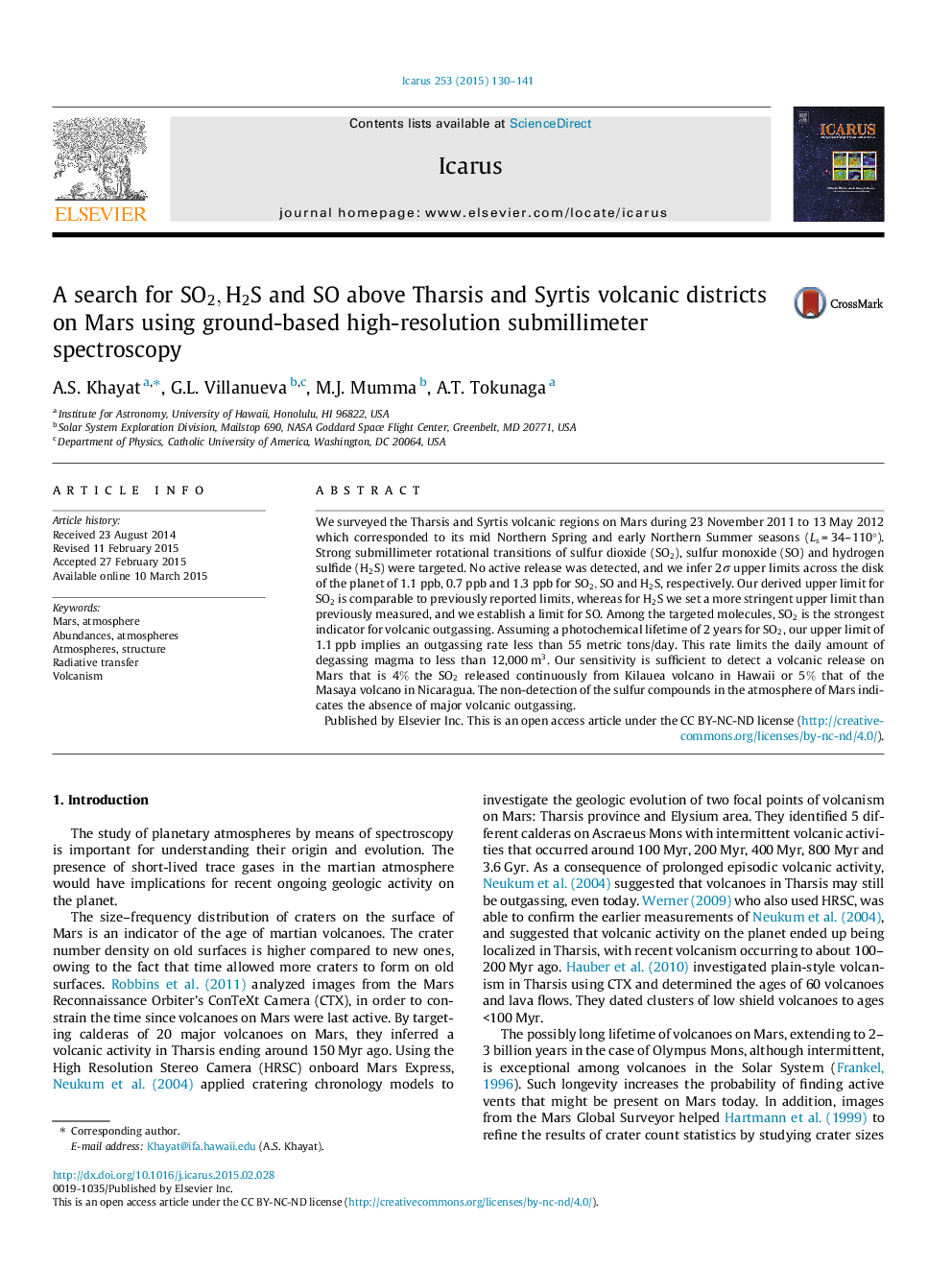| Article ID | Journal | Published Year | Pages | File Type |
|---|---|---|---|---|
| 8136391 | Icarus | 2015 | 12 Pages |
Abstract
We surveyed the Tharsis and Syrtis volcanic regions on Mars during 23 November 2011 to 13 May 2012 which corresponded to its mid Northern Spring and early Northern Summer seasons (Ls = 34-110°). Strong submillimeter rotational transitions of sulfur dioxide (SO2), sulfur monoxide (SO) and hydrogen sulfide (H2S) were targeted. No active release was detected, and we infer 2Ï upper limits across the disk of the planet of 1.1 ppb, 0.7 ppb and 1.3 ppb for SO2, SO and H2S, respectively. Our derived upper limit for SO2 is comparable to previously reported limits, whereas for H2S we set a more stringent upper limit than previously measured, and we establish a limit for SO. Among the targeted molecules, SO2 is the strongest indicator for volcanic outgassing. Assuming a photochemical lifetime of 2 years for SO2, our upper limit of 1.1 ppb implies an outgassing rate less than 55 metric tons/day. This rate limits the daily amount of degassing magma to less than 12,000 m3. Our sensitivity is sufficient to detect a volcanic release on Mars that is 4% the SO2 released continuously from Kilauea volcano in Hawaii or 5% that of the Masaya volcano in Nicaragua. The non-detection of the sulfur compounds in the atmosphere of Mars indicates the absence of major volcanic outgassing.
Related Topics
Physical Sciences and Engineering
Earth and Planetary Sciences
Space and Planetary Science
Authors
A.S. Khayat, G.L. Villanueva, M.J. Mumma, A.T. Tokunaga,
